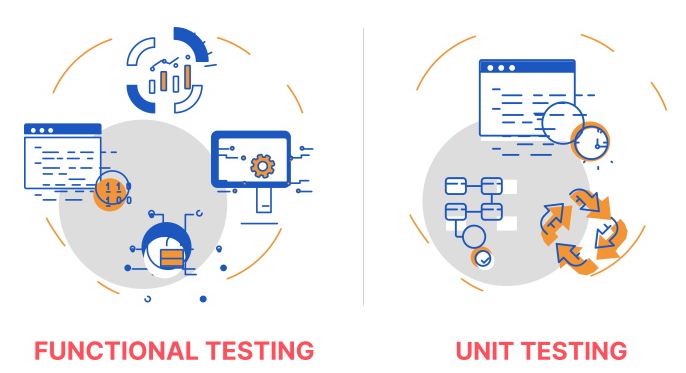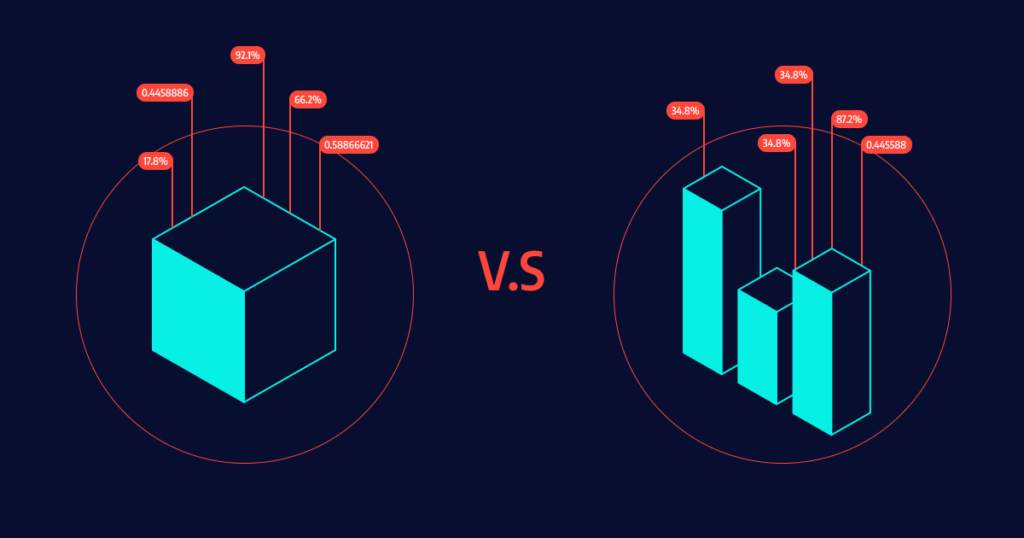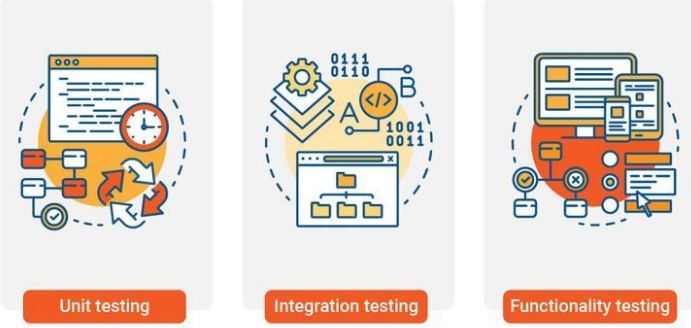Usually, during the making of a software, the developers follow the software lifecycle which starts with taking the requirements. Then, understanding them, breaking down the complete solution in parts and completing the work to deliver to the client. But, before you deliver your solution to the client, you need to be 100% sure that your solution is the best possible one and for this reason the concept of Testing developed. Herein, we check our changes say unit wise(Unit Testing), functional-wise(Functional Testing) or wholly (Integration Testing), even there are other types of testing too. So, with these things in mind, let’s start with the topic at hand and gain in-depth knowledge on Unit Testing vs Functional Testing.
Here’s a quality read on Unit Testing Node JS. Grab it right away!! –>
Unit Testing vs Functional Testing
The goal of any software or application testing is to create a quality product. And, to create such a quality product thus, you require various testing techniques to test that there is no discrepancy in your product. That is where, Unit Testing and Functional Testing along with other testing types, play an important role to enhance and make a quality software.

- Unit tests are performed by the developer during the development cycle, and Functional tests are performed by the tester at the system testing level.
- Unit tests are fast and help in writing clean code, but they do not provide assurance that the application will work as expected. They only thus help us find the problem/bug in the code.
- Functional tests are slow and complex, but they ensure that the system works as per the requirements. They help us to identify the problems/bugs in the functionality.
Unit Test –>
It is a type of test done to test the smallest of codes and thereby eliminate the risk of any mischievous error in your code. Thus, its purpose is to test and validate each unit of the code and check and verify if the code is working as excepted and is error-free.
Here, your code is thus, broken down into the simplest bit that can work on its own (thereby, known as Unit) and tested and verified. The main goals of unit testing are:
- Isolating the smallest section of code, thereby, testing each and every function and methods.
- Verifying the validity of the code.
- Finding and fixing bugs.

Here’s a great guide on UI-UX Testing. Get your hands on it right away!! –>
Benefits –>
- Unit tests allow developers to learn more about the functionality of a unit. and even the APIs.
- It also thus allows the developer to refine the code and enhance the module if required.
- Not only that it also testing parts of the project without depending on others for completion.
Functional Test –>
This facilitates the validating of a software against functional requirements. The purpose of functional testing is to test each functionality of the software application by performing appropriate input and output checks against the functional requirements. In other words, functional testing is a type of testing where the system is tested against the functional requirements/specifications. The main goals of functional testing are:
- To find bugs related to code and more importantly the functionality.
- To gain confidence and provide information about the quality level.
- To avoid errors and ensure that the result meets the end-user requirements.

Benefits –>
- Functional tests thus help to evaluate the performance and functionality of a software application before the final delivery.
- It also ensures real-world usage scenarios are taken into account, to meet the end-user requirements.
- Also, it helps to improve the actual usage of the system.
- Not only that, it also thus increases the quality of the software product.
Want to know about Agile Methodology? Here’s all that you need today!! –>
The purpose behind Unit Testing and Functional Testing?
Unit Tests –>
By now, thus, you are well aware that, Unit testing is a software testing method in which individual units of code are tested separately. The purpose of unit testing is to separate the smallest testable parts of an API. Thus, verifying that they work properly in isolation. A unit test can check various behavioral aspects of the system under test, but mainly it checks whether the system under test produces the correct results.
From the developer’s point of view, the purpose of unit tests is to create a solid code base with minimal effort. Another important purpose of unit testing is to provide adequate documentation for high-level testing, i.e. integration testing and functional testing.
Want to take a break from Instagram? Let’s see how you can do that!! –>
Functional Tests –>
Likewise, in functional testing, a tester does not care about the core code. But, has to compare the output with the expected output based on the user requirements.
The main goal of functional testing is to check the functionality of the system. Functional tests check all the software, hardware and network infrastructure – from the front-end to the back-end database systems. They are also a form of integration testing, ensuring that all components work together as expected.
Unlike unit tests, functional tests do not tell you what is wrong or where it is. They only tell you that something is not working. This can be either the test, the browser, or a race condition. There is no way to tell because functional tests follow end-to-end testing.
Here’s how to hack a laptop camera using the IP address? Find out more on it here!! >

WRAPPING UP!! –>
By now, I can safely, vouch that you are by now definitely aware about Unit Testing vs Functional Testing. Not only that, you have also come to know about various other facets related to Unit Testing and Functional Testing. Including, all the benefits and advantages of each over the other. So, all in all, you have acquired a great deal of knowledge. Now, you as a developer must choose the appropriate testing type to end with a quality product. Thus, the choice is yours. But, do remember, if you’ve any confusion or questions whatsoever about this topic, do feel free to reach out to me in the comments section and thus, I will readily try to help. On that note, until the next time, see ya!! Goodbye!!
